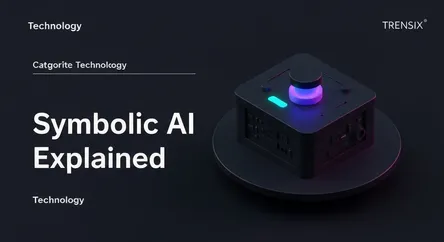Technology
Symbolic AI Explained

Explore Symbolic AI, the classic approach to artificial intelligence that uses logic and rules to mimic human reasoning and build transparent systems.
What is it?
Symbolic AI, often called Good Old-Fashioned AI (GOFAI), is an approach to artificial intelligence that represents problems and knowledge using human-readable symbols, such as words and logical rules. Unlike modern machine learning which learns patterns from data, Symbolic AI operates on a pre-defined knowledge base and a set of explicit rules to perform reasoning and make decisions. This method excels at tasks that require structured logic, abstract reasoning, and explainability. Classic examples include expert systems used for medical diagnosis, chess-playing programs, and logic-based problem solvers. It's fundamentally about manipulating symbols to reach logical conclusions, much like a human would solve an algebra problem.
Why is it trending?
While deep learning has dominated the AI landscape, Symbolic AI is experiencing a significant resurgence. This is driven by the limitations of purely data-driven models, which can be opaque "black boxes" and struggle with common-sense reasoning. The trend is towards hybrid approaches, particularly neuro-symbolic AI, which combines the pattern-recognition strengths of neural networks with the logical reasoning and transparency of symbolic systems. This fusion aims to create more robust, trustworthy, and generalizable AI that can understand context, reason abstractly, and explain its decisions.
How does it affect people?
Symbolic AI directly impacts people by powering systems where explainability and reliability are critical. It's the foundation for rule-based engines in finance and insurance, clinical decision support systems in healthcare, and complex logistics planning. The rise of neuro-symbolic models promises more advanced personal assistants that can understand nuanced requests, safer autonomous vehicles that can reason in novel situations, and more powerful scientific tools capable of forming and testing hypotheses. This push for more understandable AI ultimately fosters greater trust and enables more sophisticated collaboration between humans and machines in complex domains.